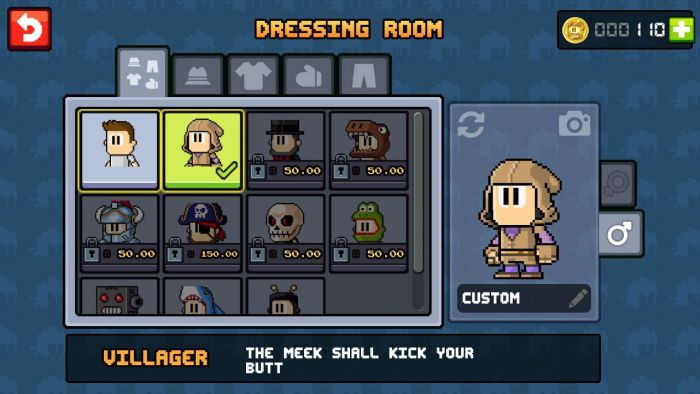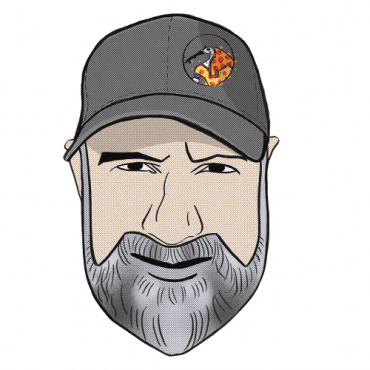Story for Platformer Games: Visual Evolution
- Edwin McRae
Visual Evolution is really just a fancy way of saying that your platforming player character is changing before your eyes as you progress through the game. And that exterior change should be a reflection of their interior change.

You see the simplest and most obvious versions of this in loot-based ARPGs like Path of Exile and Grim Dawn. As you progress through the game, you pick up loot, some of which you equip onto your player character, thus changing their appearance. The stronger the character grows, the better loot drops they can access, leading to a much more impressive ‘look’ for your character as you equip increasingly epic gear. Your player character’s inner strength, their Level and Stats, are directly reflected in their outer strength through the gear they strut about in.
But what if you want to express something more subtle than how heroic and epic your player character is becoming? Well, gear can actually come to the party here as well.
Gear as Character
A platformer with RPG mechanics can make use of gear and loot just as easily as an ARPG can. In Dan the Man, the premium version offers a customisable player character, but instead of picking up new costume elements for your PC during the game, you earn money that can then be used to purchase new bits of costume. This is great if you love dressing up dolls, but not so good if you want to show character progression through costume and gear.

Alternatively, you could curate the bits of costume and gear that a player can pick up in such a way that it reflects deeper changes in the player character. There’s an interesting psychological effect called ‘Enclothed Cognition’ that goes on here. No need to go into the studies and details. Suffice to say that what we choose to wear has a direct influence on how we behave. Put on a police uniform and you do feel a little more authoritative. Put on a lab coat and you feel a little ‘smarter’. Perhaps try it for the next couple of days. Go out all in black on one day, then the following day go out in bright colours (if you have any). Note the differences in how you behaved each day and you might be a tad surprised.
And as it turns out, the Enclothed Cognition effect also translates into virtual worlds. Best if we use our reluctant supergirl, Blink, as our model to demonstrate.
Blink Phase 1 - Confidence and Power
At the beginning of our platformer, Blink is dressed in drab greys and blues, and her outfit is shapeless and baggy. She doesn’t feel comfortable in her own skin so she hides her body away and tries to fade into the background. But once Blink has completed the first couple of levels and kicked some arse, we offer her outfits that she can pick up that not only have buffs built in, they’re also more form-fitting and tend to come in power-oriented colours like black and red. Think this’ll make the player also play more confidently, perhaps take a few more risks? Chances are, yes.
So far we’ve just done the usual ARPG thing, offered gear that empowers the player character. Now let’s try something a little different.
Blink Phase 2 - Moral Ambiguity
During the next few levels, as Blink goes deeper into regime territory and overcomes increasingly tough odds, we start to offer up items with powerful buffs and some unsettling aesthetics. Since Blink is picking up gear from fallen regime henchpersons, she starts to look like she belongs in the regime. Will this subtly encourage the player to be more ruthless, a little less empathetic in their choices? Creepily...yes.
Blink Phase 3 - Turning Point
What a ‘coincidence’! Blink happens upon stockpiles of confiscated items in the higher levels of the game. They once belonged to freedom fighters, like herself, who were captured and killed for their transgressions. Now Blink has a choice of gear to choose from. She can continue to develop her ‘regime look’, and take advantage of a steady ascendancy of buffs, or she can switch to the brightly-coloured outfits of her predecessors, yet have to deal with some pretty idiosyncratic stat combos that’ll take a bit for the player to get their head around.
The predictability and cognitive comfort of the dark path versus the challenging and often OTT path of light. Or perhaps some ‘shadow rainbow’ combination of the two?
Flesh and Blood Changes
Remember Doom? Remember how your little profile picture looked steadily more ‘beat up’ the lower your health got? Seeing my player character looking like death warmed up, that seriously motivated me to find a health pack and be very careful until I did. It was far more effective than any health bar or number display. That bloodied face helped me really feel the punishment my PC was taking.

You could certainly do this with a platformer PC, or with any 3rd person representation of a player character. The lower their health, the sicker they look. Once health is restored they look like a box of birds. There’s no need to reflect these states in the mechanics, unless you really want to. The visuals are enough to strengthen the empathic connection between player and PC.
Trying this from a different angle, what if Blink were to look increasingly toned and athletic as she progressed through the levels, to show the sheer physical exertion and development she’s experiencing? And on the other hand, what if her blink power has a side effect? The more she uses it, the more insubstantial she starts to look, like she’s becoming less and less anchored in the real world? Basically, you’d just be making the Blink PC increasingly translucent or pale, depending how it worked with your scenery. Just the fact that Blink is starting to look like her own ghost, that’s enough to give the player’s spine a tingle.
Visual Character Arc
With both Gear and Flesh, we’re talking about creating a visual character arc for your platformer’s PC, an in-your-face reminder to the player that their PC is growing and changing in response to the journey within the game. There are likely far more ways to do this than I’ve laid out here, but at least we’re thinking in some fresh directions.
Where to next?
This will be the fourth and final article to focus on the platformer player character as a storytelling asset. It’s been a great starting point for me, but there’s so much more we could talk about in terms of narrative expression in platformers. So what do you think? Where should we head next with this?
Feel free to comment on this post, wherever it may be, or email me directly at edwin@edmcrae.com.
Cheers!

About Edwin McRae
Edwin is a narrative consultant and mentor for the games industry.
